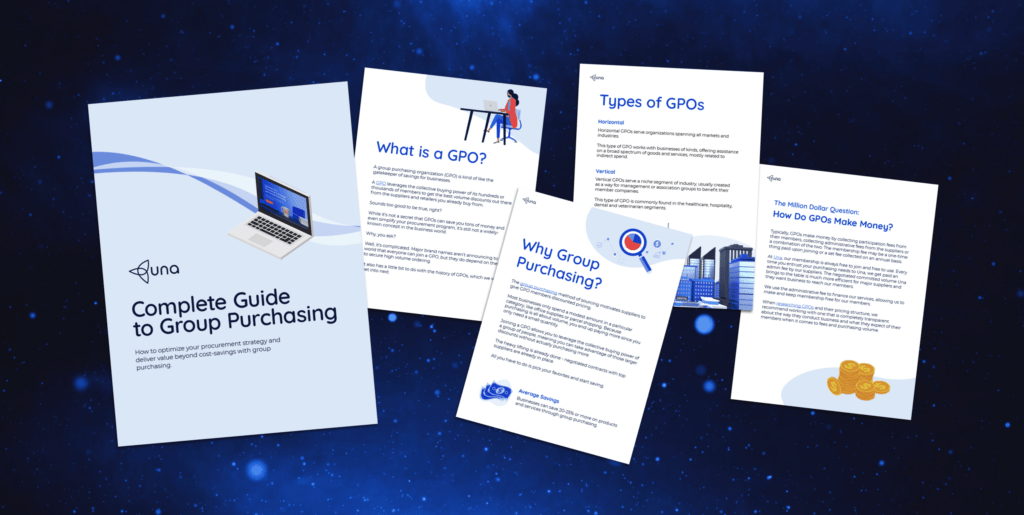How Managing Indirect Spend Can Maximize Business Savings
By Hugo Britt | August 3, 2021
Back when I had a casual job working in a bakery, one of my fellow bakers thought it would be funny to stick a handwritten sign on the bin where we used to throw unsold bread at the end of the day. It doesn’t take long for old baguettes and sourdough loaves to lose their freshness, which is why she chose to label it the “TOO-HARD BASKET.”
Too-hard basket is the term that comes to the minds of many procurement professionals when they consider the challenge of managing indirect spend. And it’s easy to see why. Indirect spend is beset with problems including fragmented spend across multiple categories, data scattered across siloed databases, a lack of centralized control, and ever-present maverick spend.
Sounds exhausting, doesn’t it? But in an economy where every dollar saved makes a difference, the size of the prize for getting indirect spend under control is impressive.
Unlock massive business savings by managing indirect spend
According to a report by Mckinsey, managing indirect spend has the potential to cut product and service costs between 10 and 25%, reduce manual workloads by 30 to 50%, and slash time-to-market by 30 to 40%.
The great news is that procurement technology has finally caught up with our ambition to tackle indirect spend. Through the power of intelligent spend engines, advanced analytics solutions, and seamless B2B ordering and payment, indirect spend management can at last be retrieved from the “too hard basket” and elevated to the top of our to-do lists.
Where to start when it comes to managing indirect spend
Centralize
Unmanaged spend is always decentralized, which means procurement attempts to control it at arms-length through the use of policies. Unfortunately, this rarely works because the people making purchases throughout your business are not procurement professionals, and are time-poor because they’ve got their own workloads to worry about.
This leads to a situation where policies are not followed, spend data isn’t captured in a central database, savings opportunities are constantly missed, and there is never any thought of continuous improvement.
Taking control of all company spend – both direct and indirect – is the only way to drive the high levels of cost savings flagged by Mckinsey. Procurement technology can absorb indirect categories without a huge increase in the sourcing team’s workload.
Get visibility
Fragmented indirect spend means crucial data is invisible to procurement and often hidden in desktop spreadsheets and email attachments. Put a system in place that ensures all future spend data is captured in a central procurement system, and be sure to follow up with any mavericks who still prefer to purchase “invisibly.”
Clean up your data
Make sure your indirect spend data is compatible with your procurement technology. Smart data categorization, classification, and harmonization tools, powered by Machine Learning to enable continuous improvement, can make this job a breeze.
Smart classification is everywhere. If you use online banking, you may have noticed that your bank is beginning to automatically categorize your personal spending into buckets like groceries, dining out, travel, entertainment, and more. Indirect spend data categorization is the same, but on a much larger scale.
Analyze
Subject your indirect spend to the same level of advanced analytics that you use with your strategic procurement categories. Doing so will help identify opportunities for spend consolidation, flag any areas of high risk, and help you spot indirect categories with high levels of maverick spend.
Get strategic
Indirect does not mean non-strategic. Use your analytics results to create a plan with short to long-term goals for indirect spend management, and build performance criteria for indirect suppliers. Review and improve the way contracts are managed, and implement a preferred supplier program for high-volume indirect categories.
Outsource
Partner with a group purchasing organization (GPO) as an alternative strategy for managing indirect spend. GPOs can help get spend under control, reduce supplier risk, and save money, time, and effort in the process. GPOs can harness billions in buying power to unlock savings for indirect categories including office supplies, travel, shipping, and more.
Does managing indirect spend still sound too hard to you? It may not be as difficult as you think. Get in touch with Una today to speak with one of our experts about how we can help make indirect spend management a breeze.




